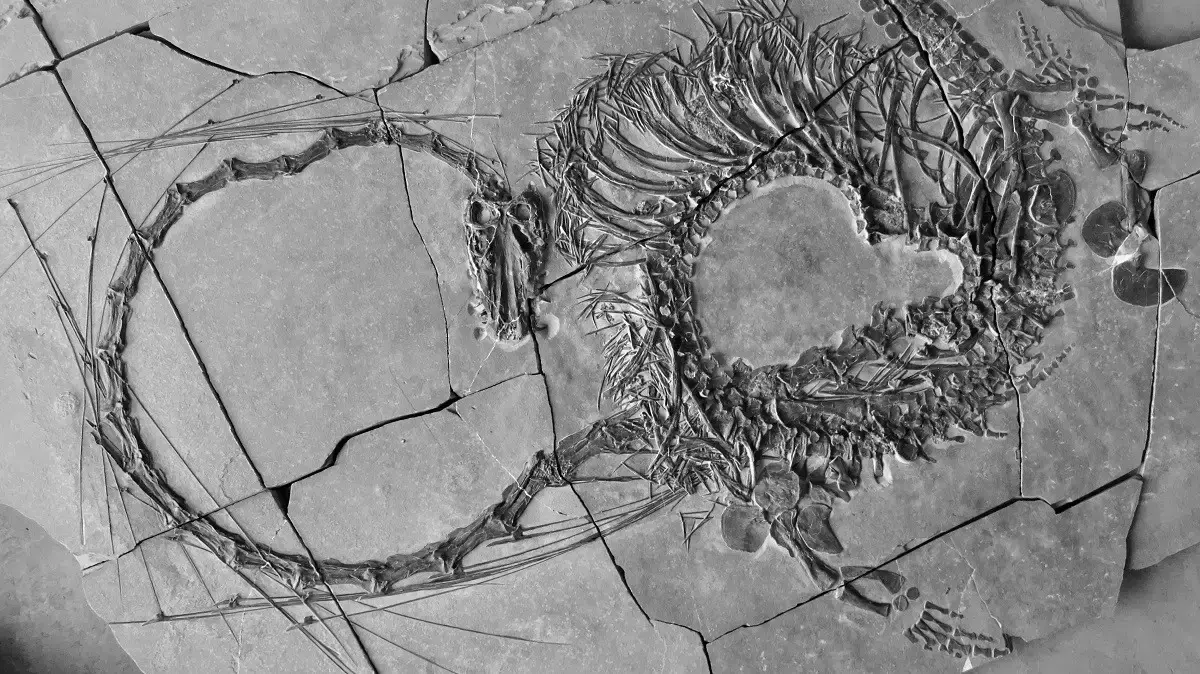Has a flying dragon been recorded in China?/YOUTUBE
The remains of a 240-million-year-old marine reptile with a striking resemblance to a mythological Chinese dragon have been pieced together for the first time by paleontologists.
The reptile, known as Dinocephalosaurus orientalis, was a giant 5-meter-long creature that lived in southwestern China during the Triassic period, a period in the Mesozoic era that lasted about 50 million years: from about 250 million years ago to about 200 million years ago.
While the species was first identified in 2003, its appearance was not entirely clear due to the use of incomplete fossils.
Since then, however, more complete fossils have turned up and allowed scientists to piece together a single specimen, showing Raushana the creature in all its glory.
The reconstructed specimen is based on seven items that include five recently discovered fossils, one of which is completely intact.
They were all discovered in Guizhou Province, a region in southern China famous for its amazing paleontological discoveries.
By piecing together the many samples, the team showed that the creature had a significantly longer neck than previously estimated, giving it its dragon-like appearance.
This is what he looks like/National Museums Scotland
The research project to restore it was an international effort involving scientists from Scotland, Germany, the US and China, who studied the fossil for over a decade at the Institute of Vertebrate Paleontology and Paleoanthropology in Beijing.
"This discovery allows us to see this impressive long-necked animal in its entirety for the first time.
This is yet another example of the weird and wonderful world of the Triassic, which continues to amaze palaeontologists," said Dr Nick Fraser, Natural Sciences Keeper at National Museums Scotland, in a statement.
"We are confident that this discovery will spark imaginations around the world due to its impressive appearance, reminiscent of the long and serpentine Chinese mythological dragon," explained Dr. Fraser.
And it's blue and white
The device that changes everything you knew about refreshing and firming the facial skin
In collaboration with Premier
"This discovery allows us to see this impressive long-necked animal in its entirety for the first time"/National Museums Scotland
Imaging the marine reptile Dinocephalosaurus orientalis/Marlene Donelly
As evidenced by its fin-like limbs, this prehistoric species was well adapted to life in the ocean.
Moreover, the researchers discovered fish bones in the stomach area of some specimens, providing a clear picture of the seafood diet of these "dragons".
More on the subject of
a monstrous and giant skeleton of unidentified marine production discovered at the bottom of the Mediterranean Sea
How many T-Rexes lived on Earth?
Researchers have found a way to determine - and the number will amaze you
Despite their marine lifestyle and long necks, the researchers explain that the "Chinese dragon" was not related to Plesiosauria, a series of ancient marine reptiles that evolved about 40 million years later.
The new research was published in the journal Earth and Environmental Science: Transactions of the Royal Society of Edinburgh.
"This extraordinary marine reptile is yet another example of the amazing fossils that continue to be discovered in China," said Professor Robert Elm, Editor-in-Chief of the journal Transactions and Fellow of the Royal Society of Edinburgh.
More on the same topic:
dragon
China

